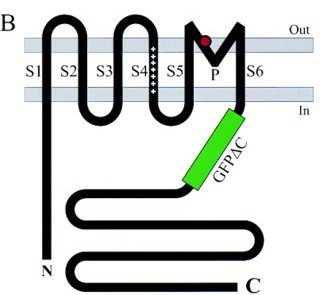
Green fluorescent proteins (GFPs) for measuring voltage
Abstract
Measuring signal transduction in large numbers of cells, with high spatial and temporal resolution, is a fundamental problem for studying information processing in the nervous system. To address this problem, a family of detectors that are chimeras between signal transduction proteins and fluorescent proteins has been designed. The prototype sensor is a genetically encoded probe that can be used to measure transmembrane voltage in single cells. This article describes a modified green fluorescent protein (GFP), fused to a voltage-sensitive K+ channel, so that voltage-dependent rearrangements in the K+ channel induce changes in the fluorescence of GFP. The probe has a maximal fractional fluorescence change of 5.1%, making it comparable to some of the best organic voltage-sensitive dyes. Moreover, the fluorescent signal is expanded in time in a manner that makes the signal 30-fold easier to detect than a traditional linear dye. DNA-encoded sensors have the advantage that they may be introduced into an organism noninvasively and targeted to specific brain regions, cell types, and subcellular compartments.